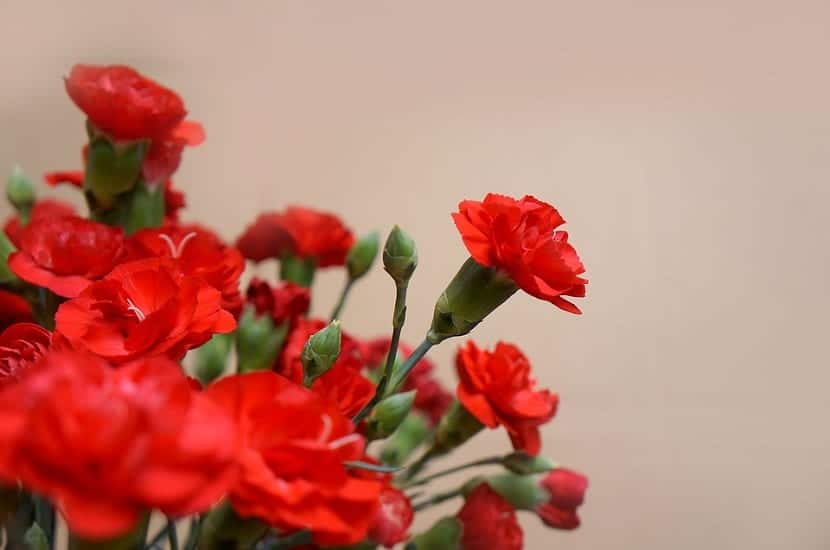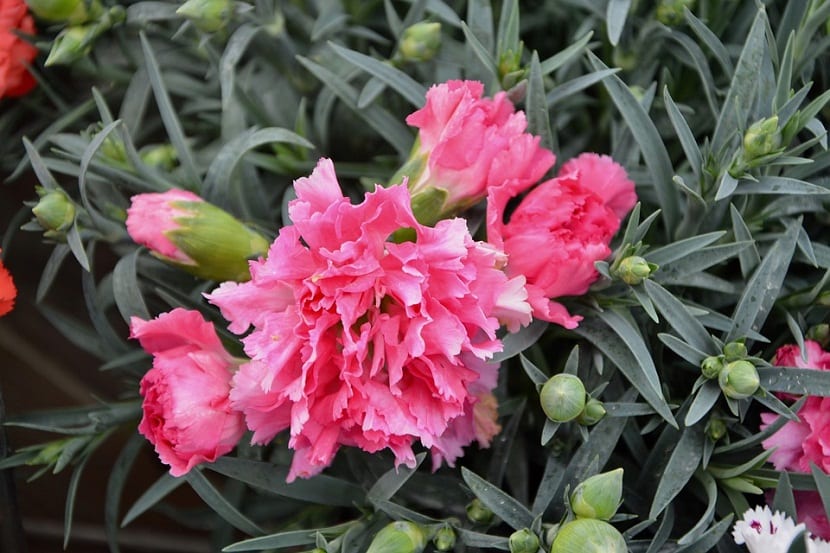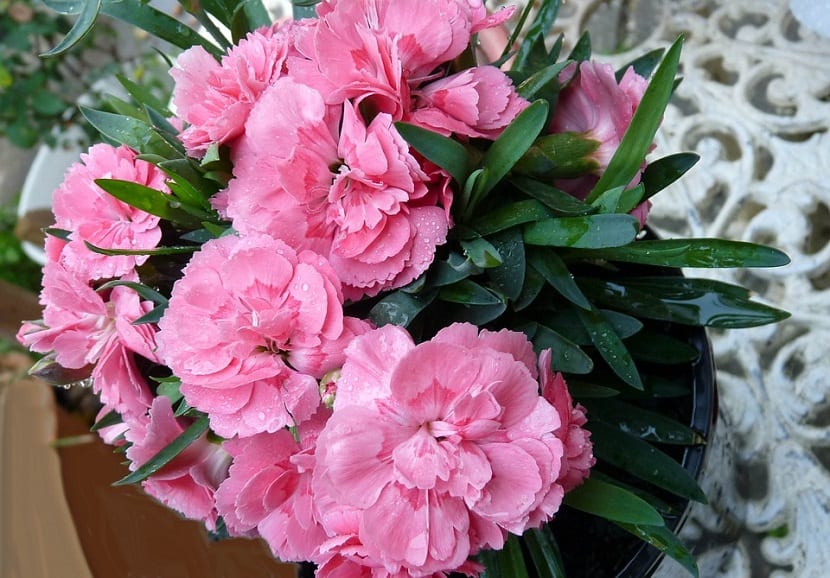
We know the Carnation as a plant that is herbaceous and that it has its origin in the Mediterranean region, although it is also quite well known in the Iberian Peninsula.
This is a flower belonging to what is the order of the Caryophyllales, from the family of Caryophyllaceae and generally most species maintain their flowering stage throughout the year.
What is this type of plant like?

Carnations They are flowers that have a lot of aroma as well as a great variety of colors and very often they are grown to give as a bouquet or to decorate.
They know each other in particular three varieties of carnations that are used for mass cultivation, in which they are grouped in Dianthuscaryophyllussubsp Coronarius, Dianthuscaryophyllusvar Coronarius and also Dianthuscaryophyllussubsp Coronarius. If we refer to cultivation for ornamental purposes, the common carnation, the poet's carnation, the crowned carnation, the rock carnation and also the well-known one from China stand out.
At carnations we can recognize them quite easily Since these are cespitose flowers, by this we mean that they have a stem that is underground that grows, causing dense bushes that can measure up to a meter in height and with a measurement of between 6 and 8.5 cm in diameter.
Carnations have leaves that are linear opposite, narrow in shape like sheaths and each of the stems gives a flower that is terminal, which has no less than five petals that are scalloped or with a kind of small teeth. In some regions of the world this family has been registered with flowers that have up to 40 petals, so this all depends on what the species is.
How are your flowers?
Since the flowers that carnations produce are bisexual, they have the ability to bloom in a group that is branched or also forked.
This is a flower that has a very strong fragrance and the most common colors in which we can find them are red, pink, yellow, white as well as mixed colors. The different sizes of this flower offer the opportunity to classify it to be able to sell it, so carnations that can measure up to 60 cm are the most popular in commerce.
Likewise, there are varieties that measure about 50 cm, 40 cm and also about 30 cm or even much less, being the latter are the most frequently used for the corsages.
As we have already mentioned, the carnation is a plant that has the ability to bloom throughout the year and in each of its varieties that are commercial they have the possibility of producing up to 20 stems throughout the year.
Caring for the carnation

It is best to not use soils that are dry, but rather those that are porous since have the ability to retain water.
We have to place the seed of the plant in an area where it can receive direct sunlight and that is sunlight is what allows the plant to size as well as the number of flowers. Seed germination usually takes about two to three weeks.
Carnations require a large amount of nutrientsIn this way, it is advisable to place compost once a week during the first ones and then it will be once a month.
It is advisable to remove flowers that are in poor condition to improve their growth. The first pruning we have to do after 15 days Having sown it, the second can be done after 40 days, it all depends on the changes that it presents after the first pruning.
To water the flowers we have to do it regularly as well as constantly, it all depends on how hot the season is. To do a transplant, the best thing to do is to do it in the fall.